
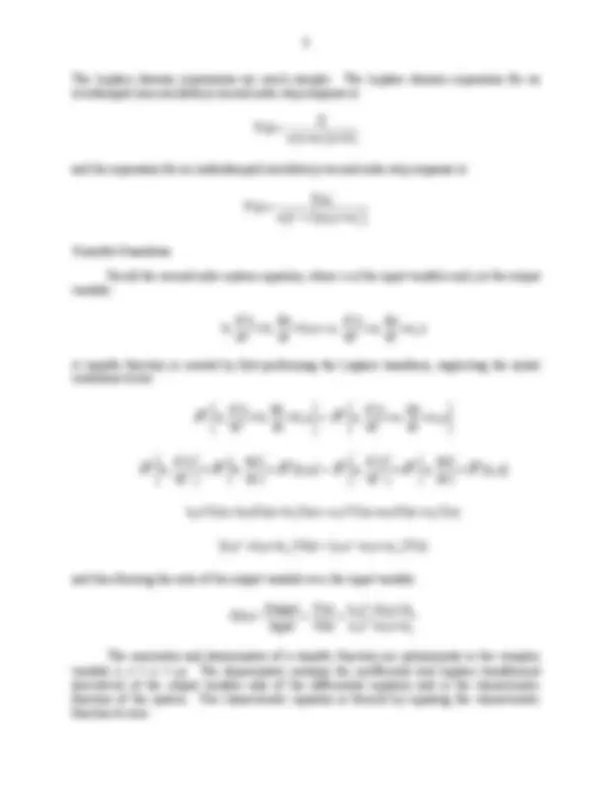
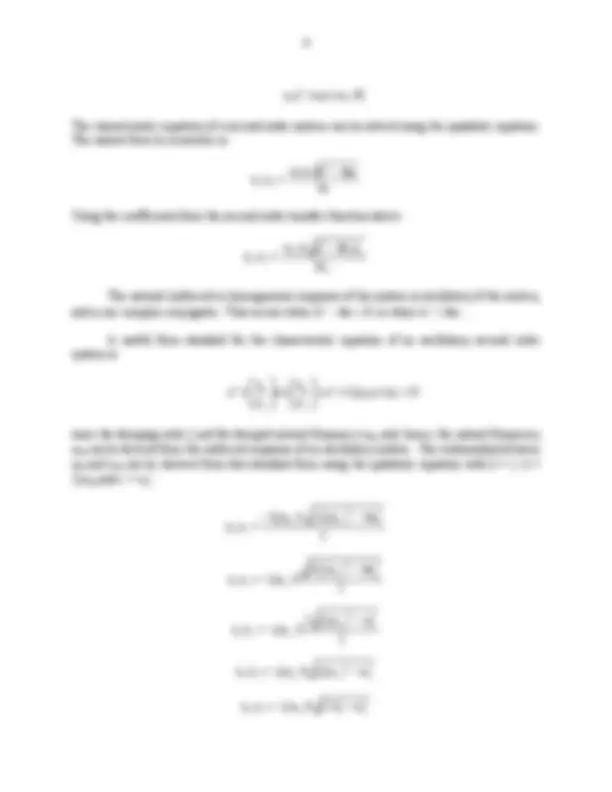
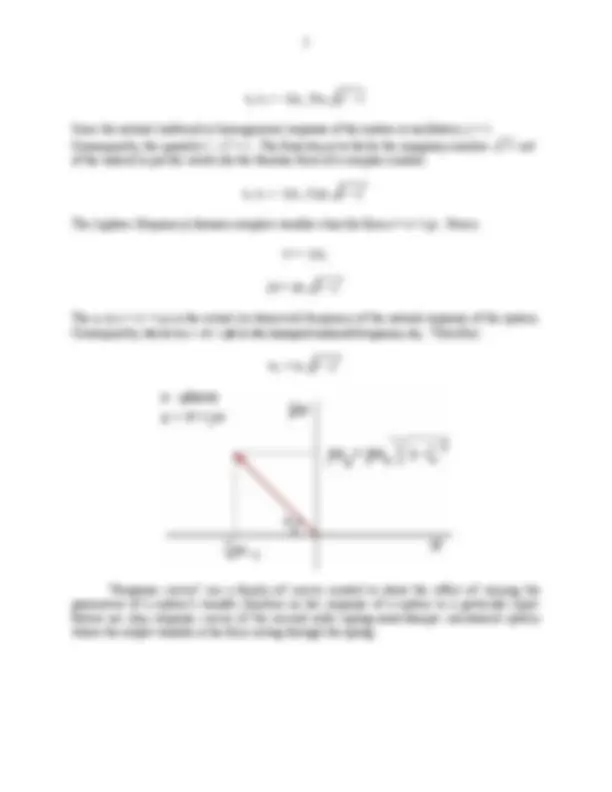
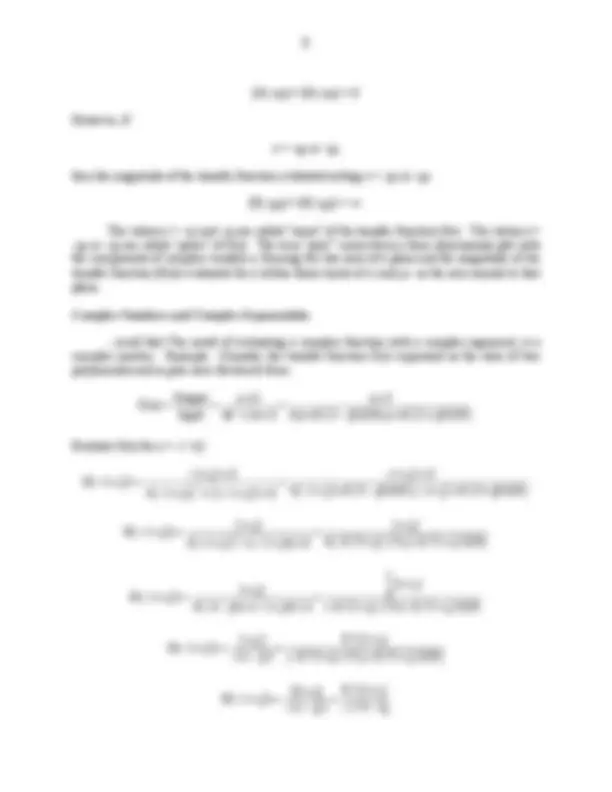
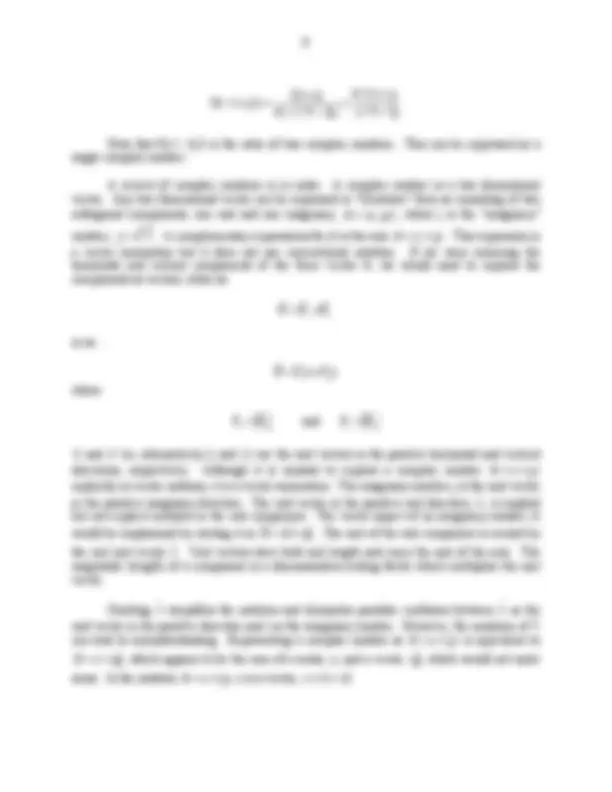
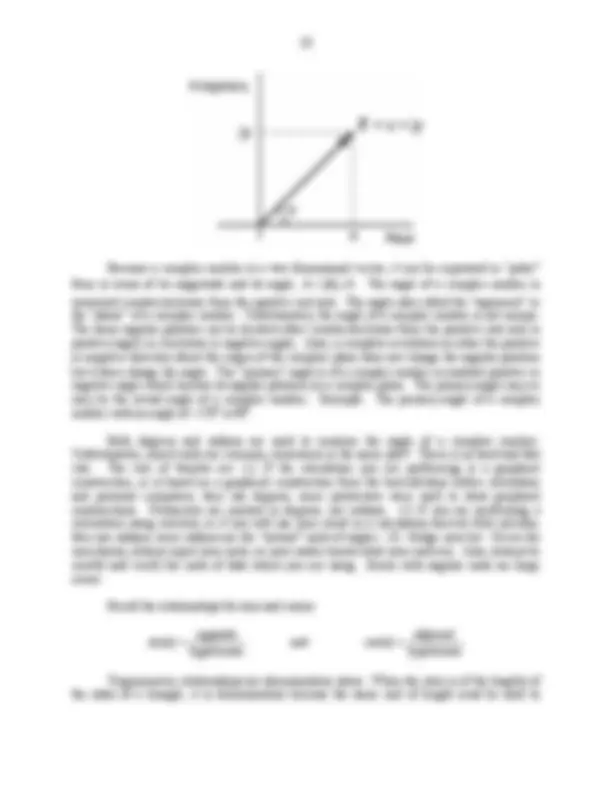
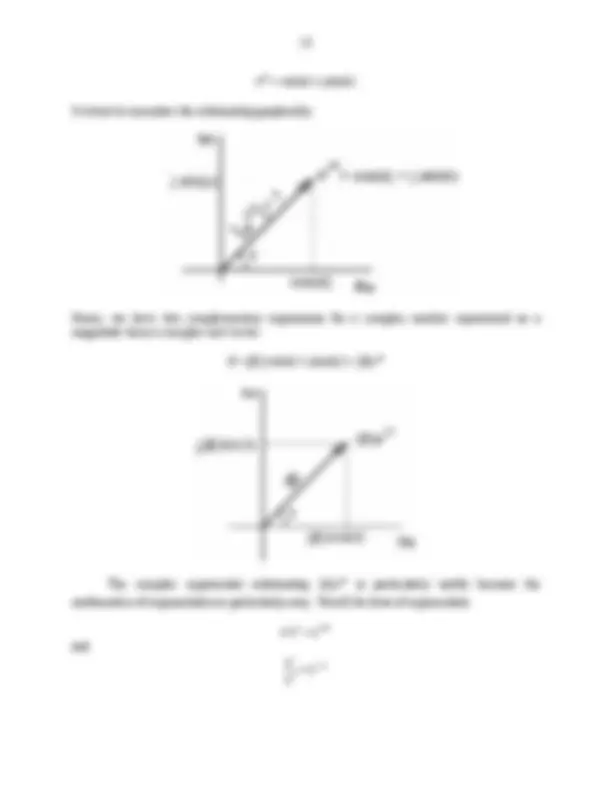
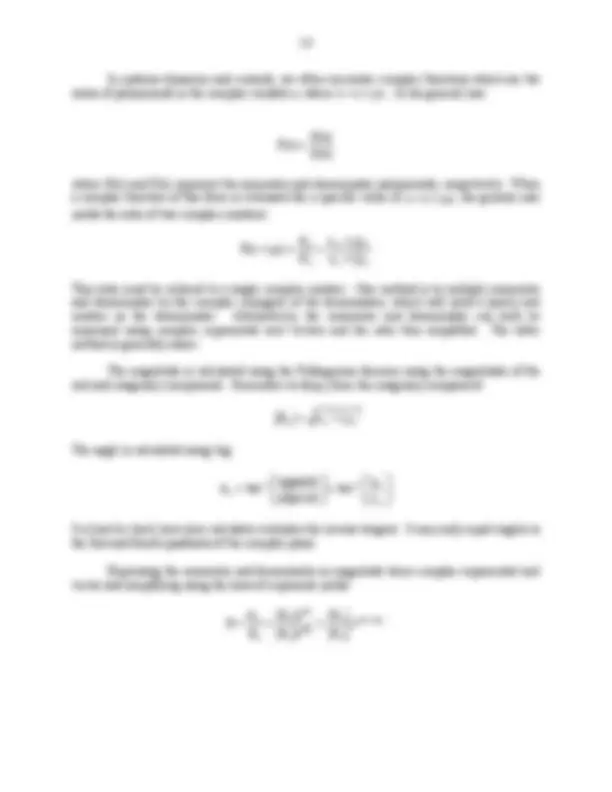
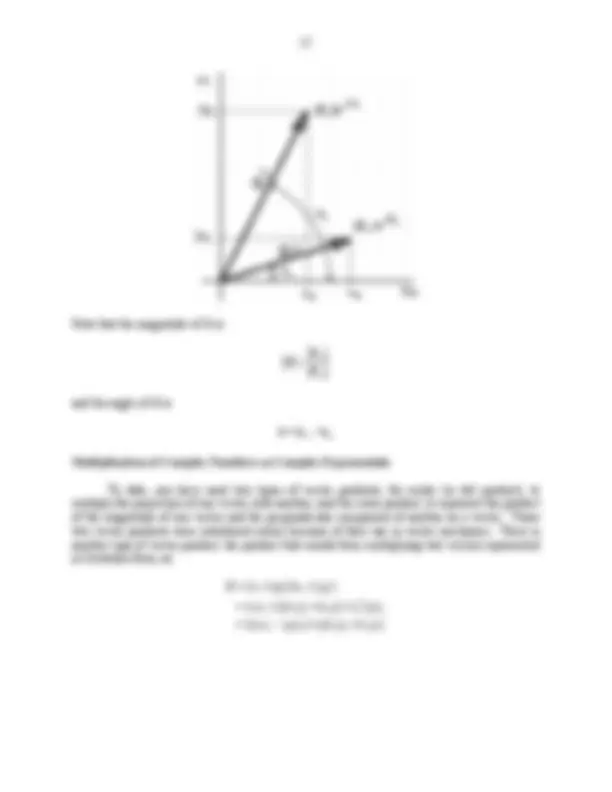
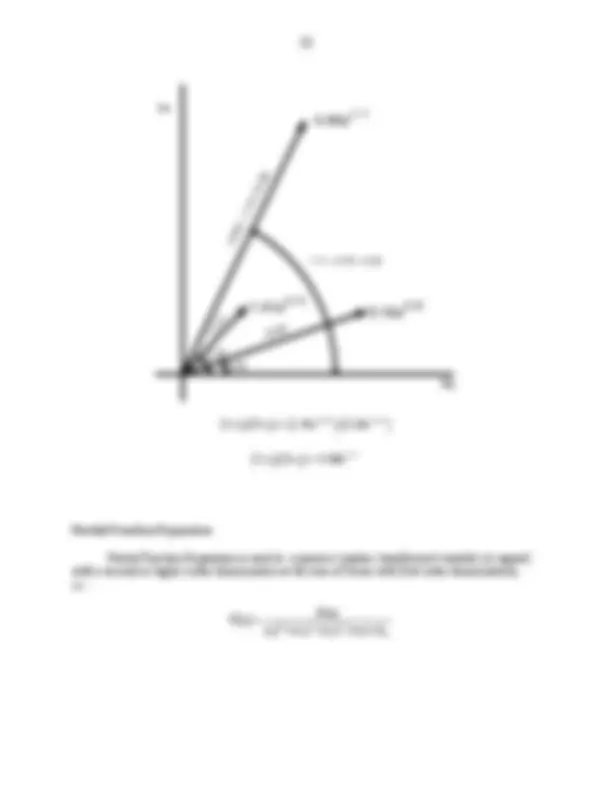
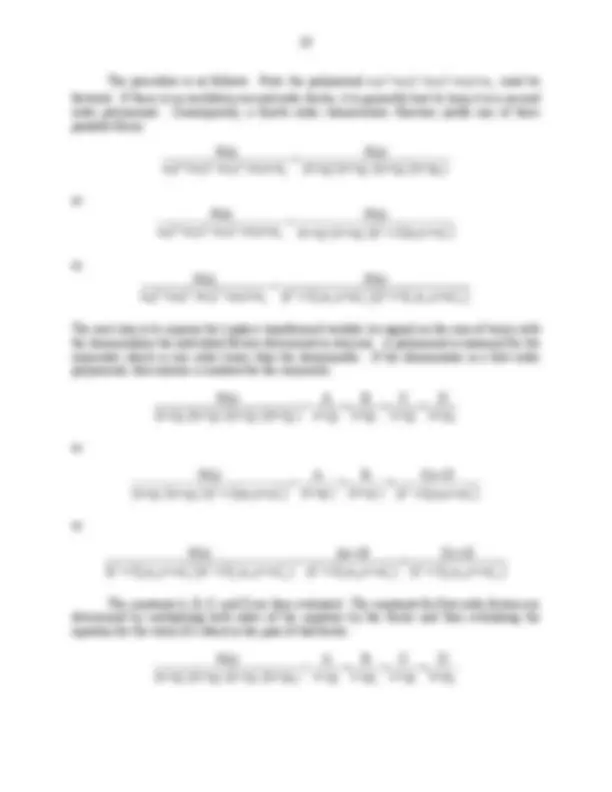
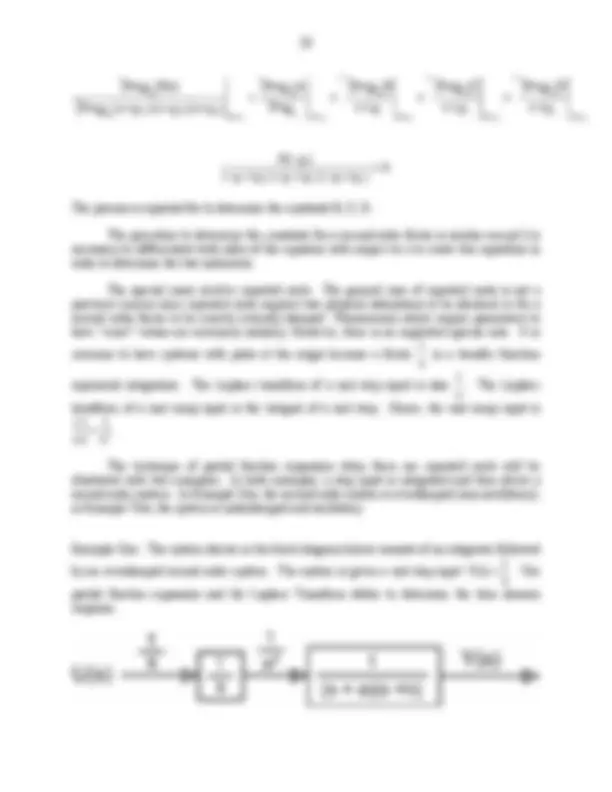
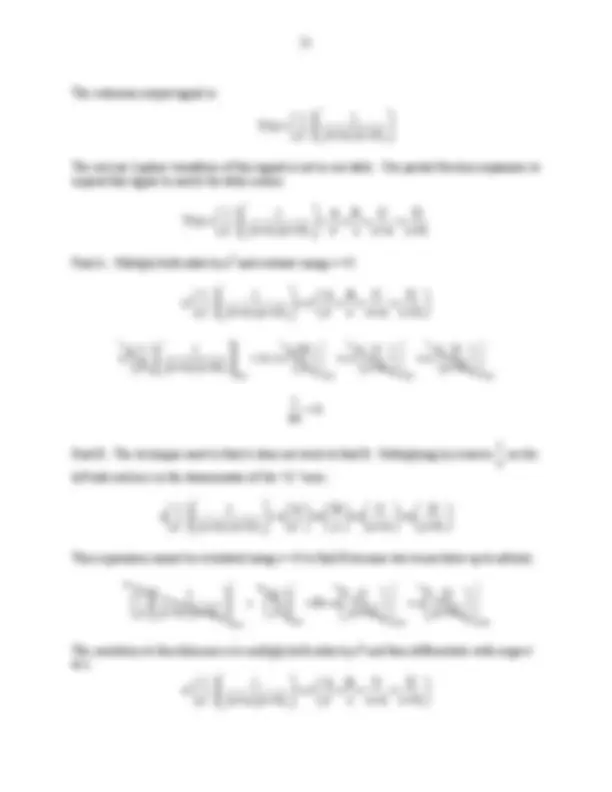
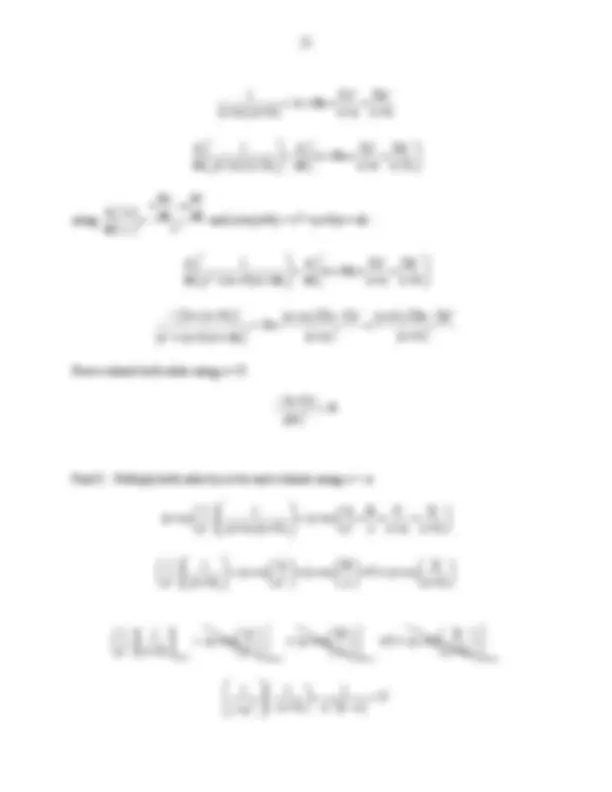
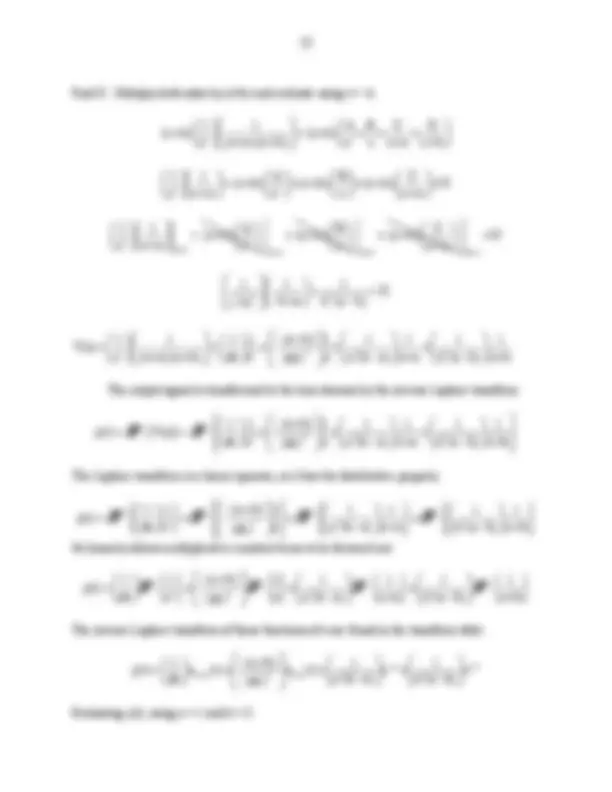
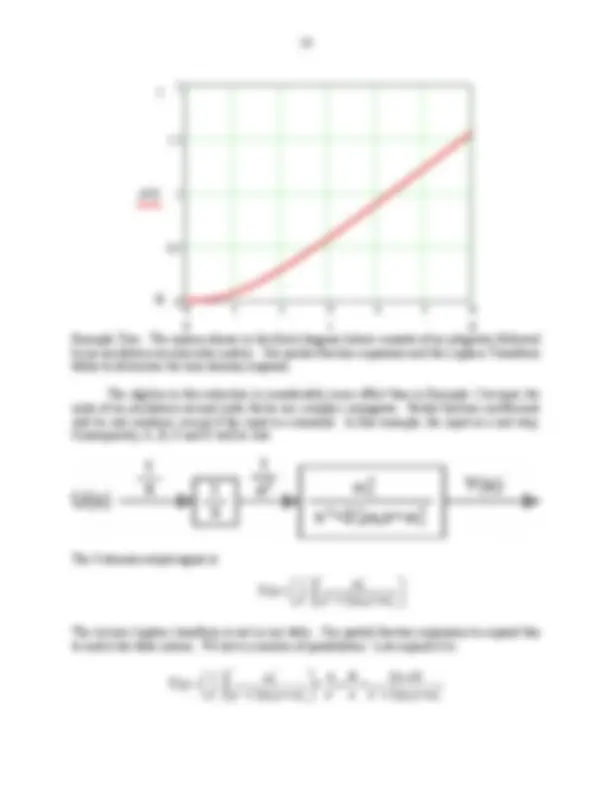
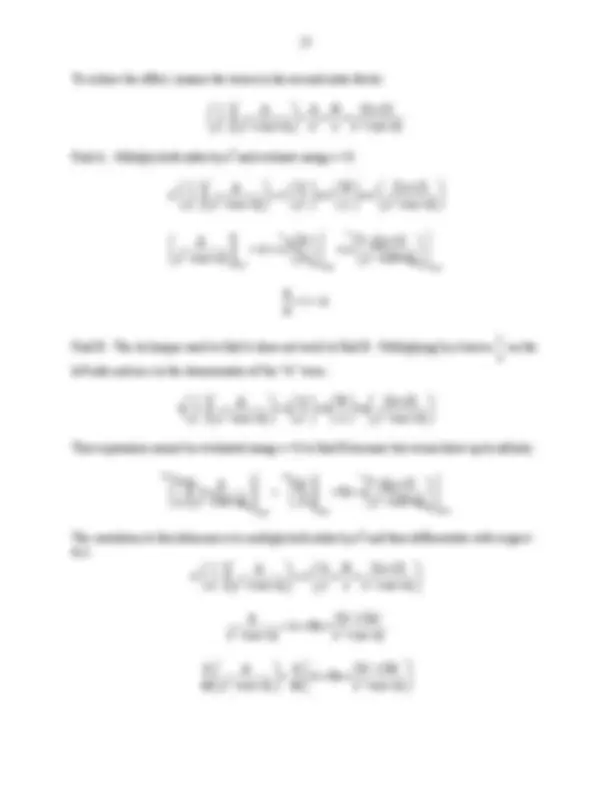
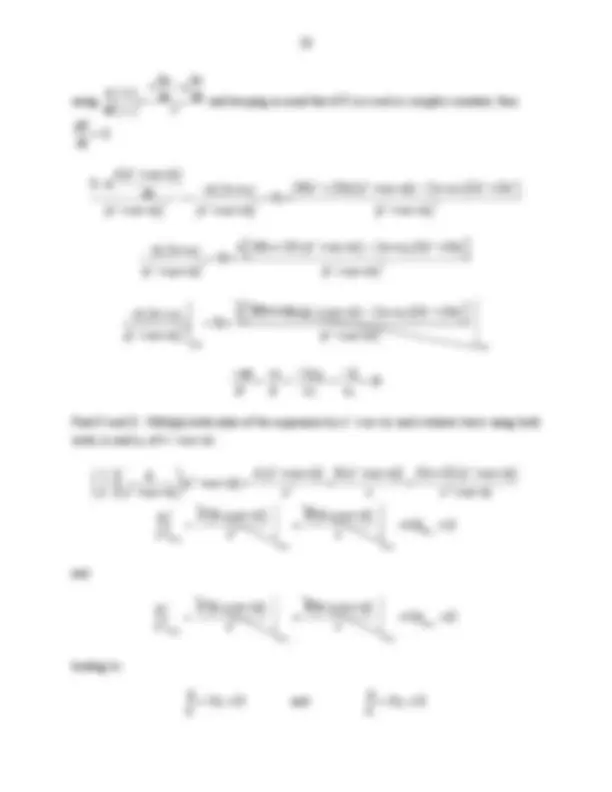
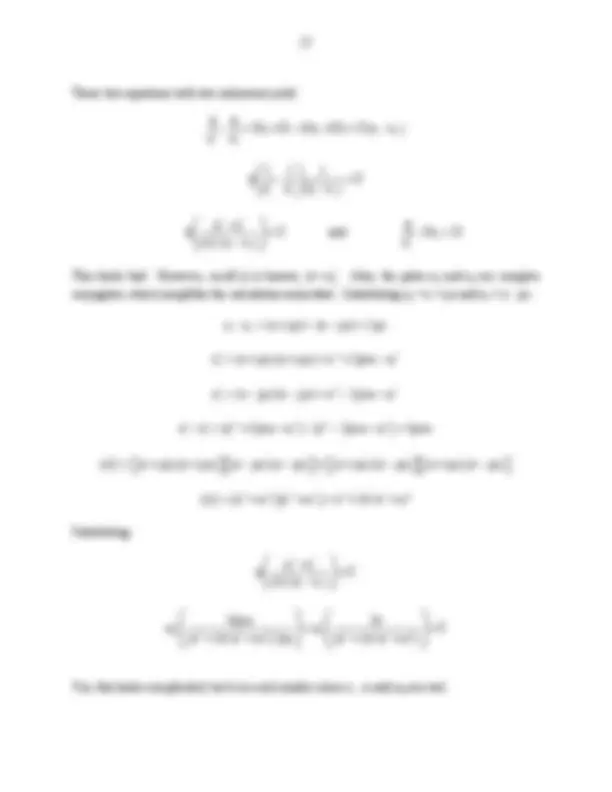
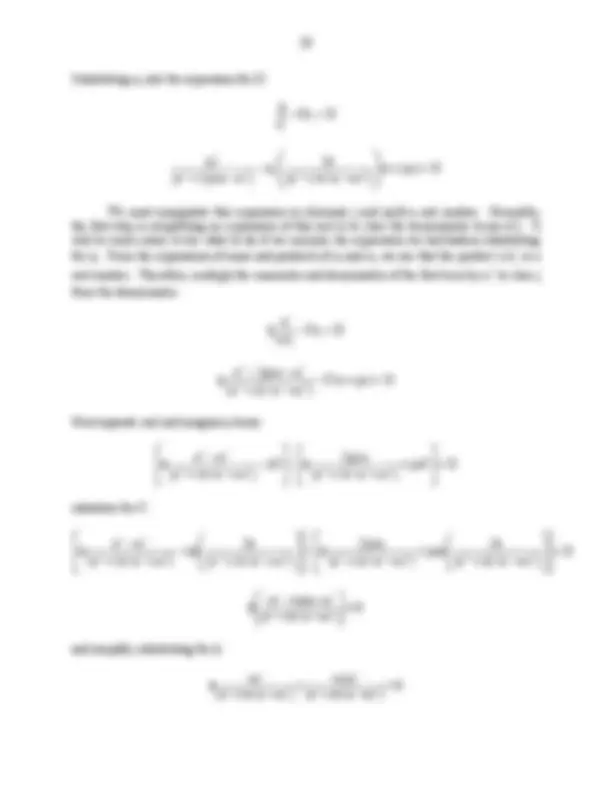
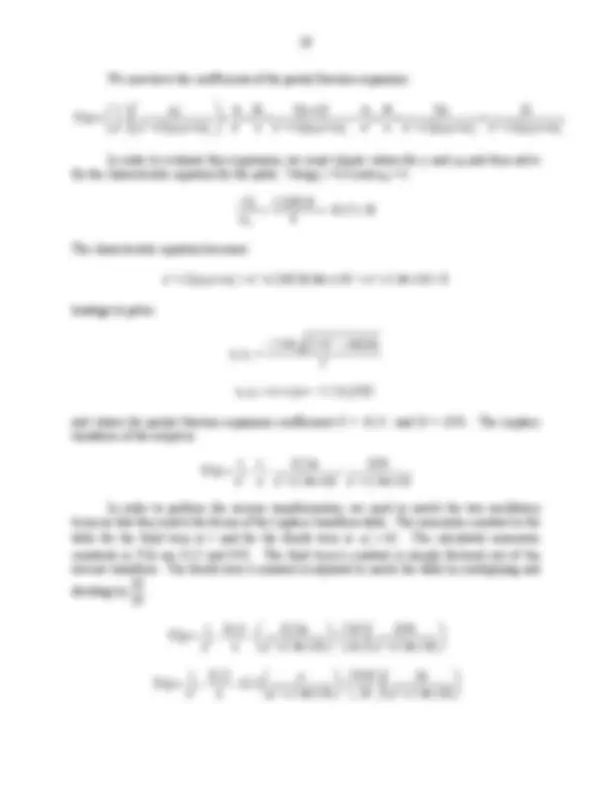
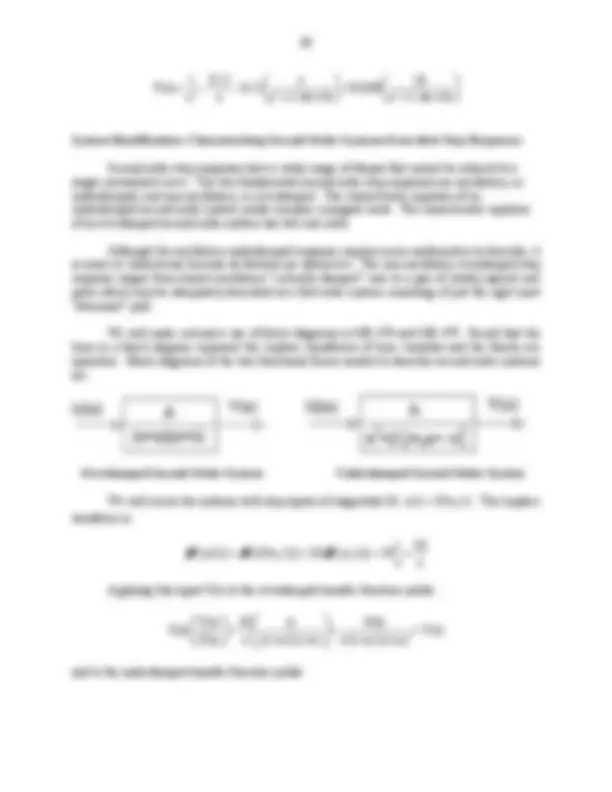
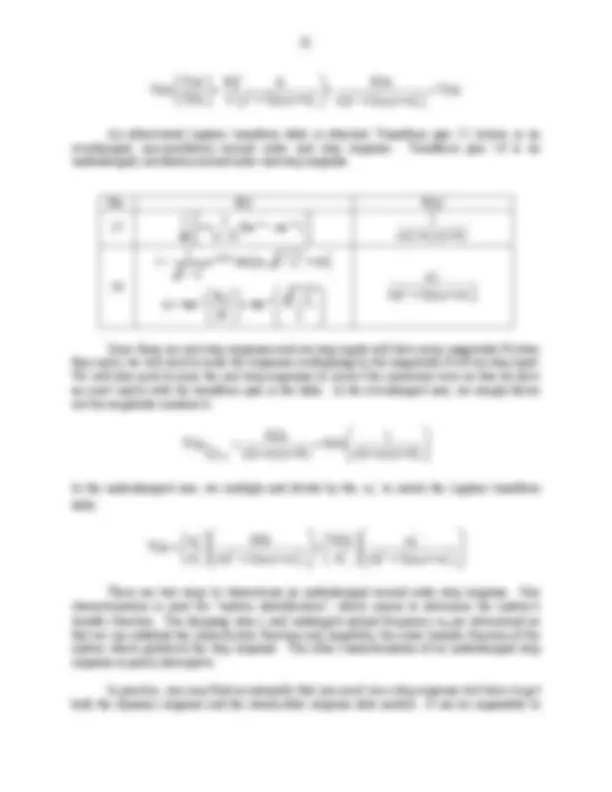
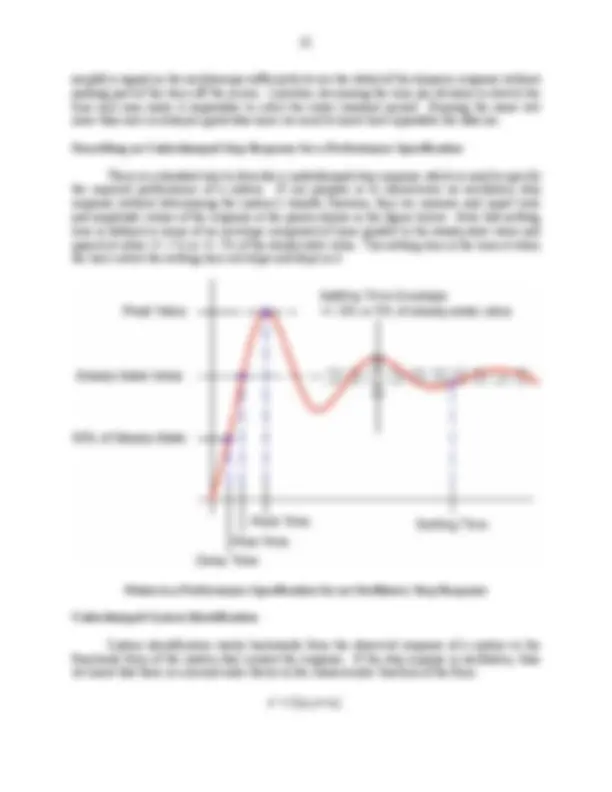
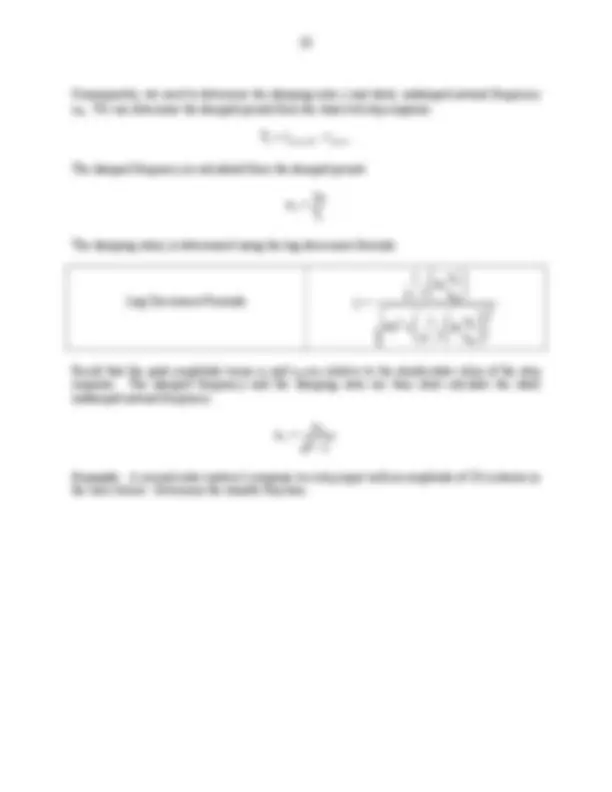
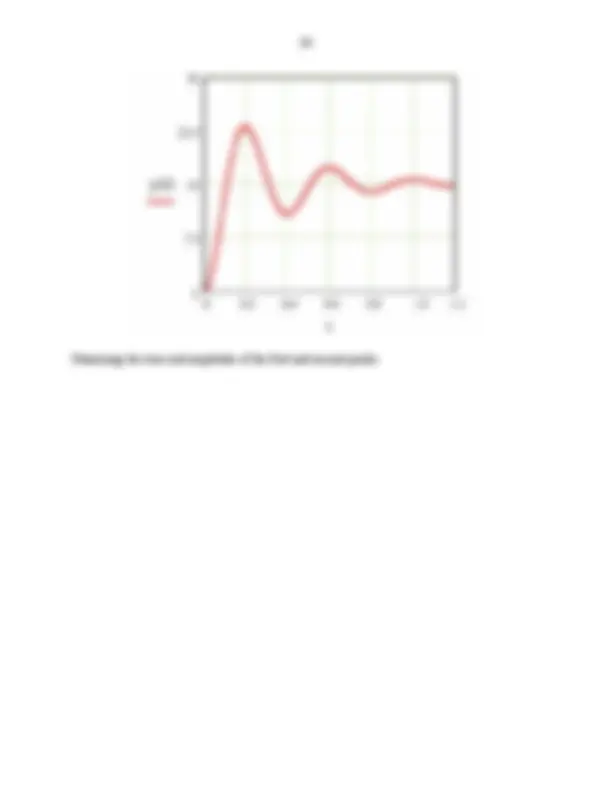

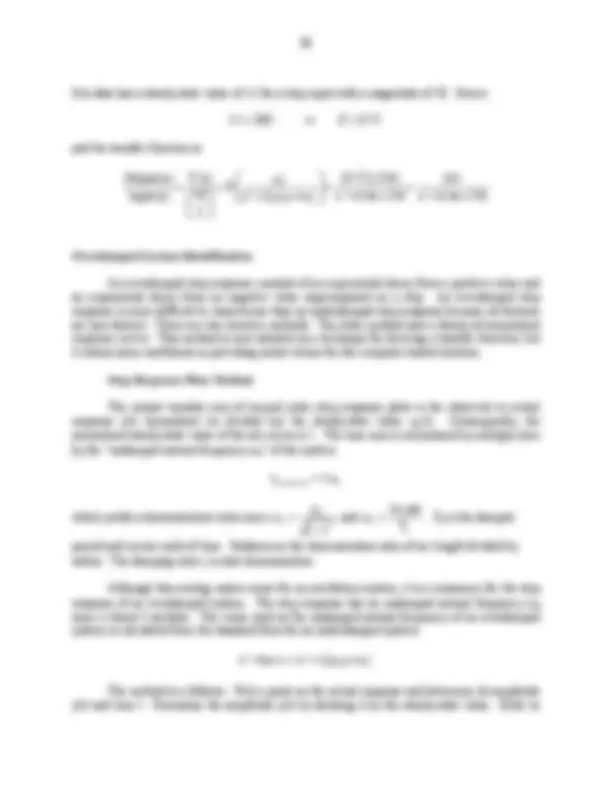
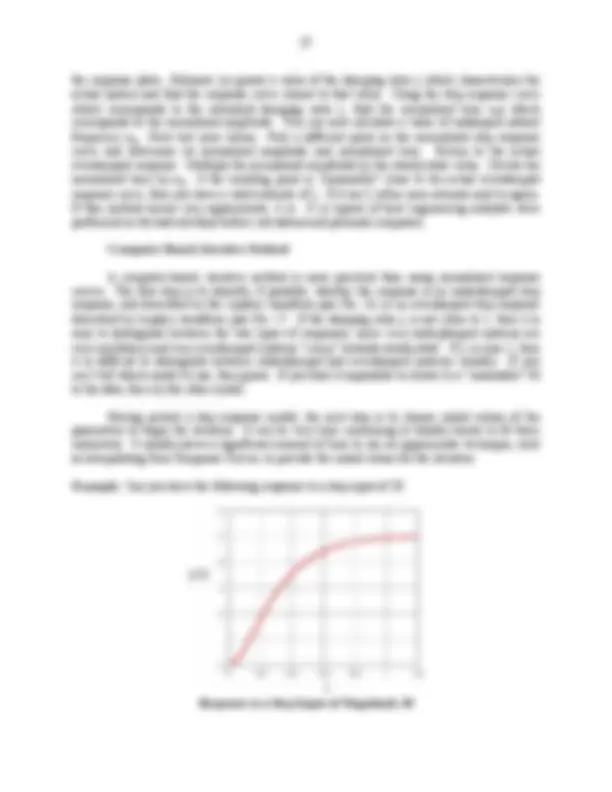
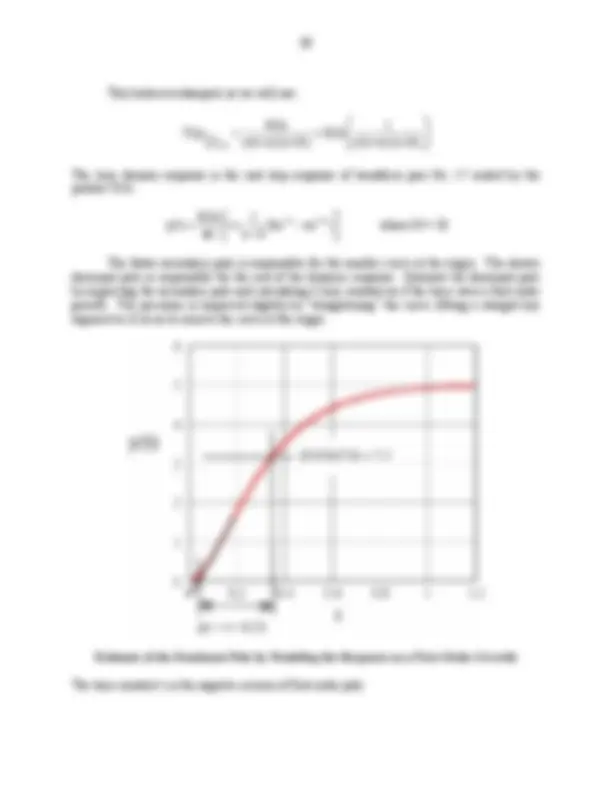
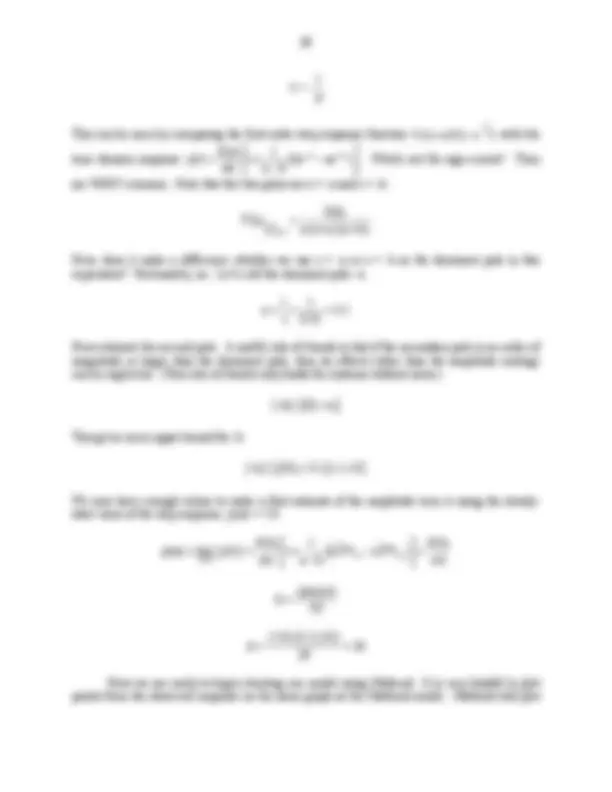
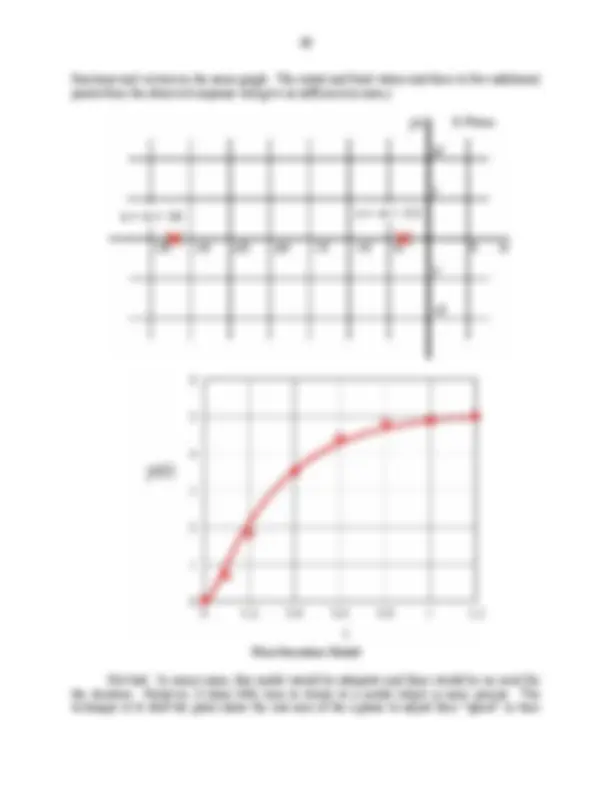
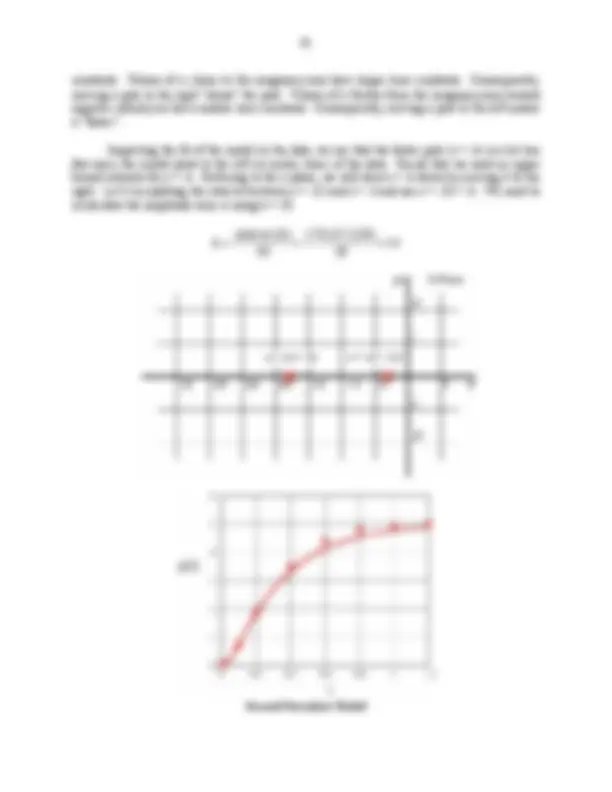
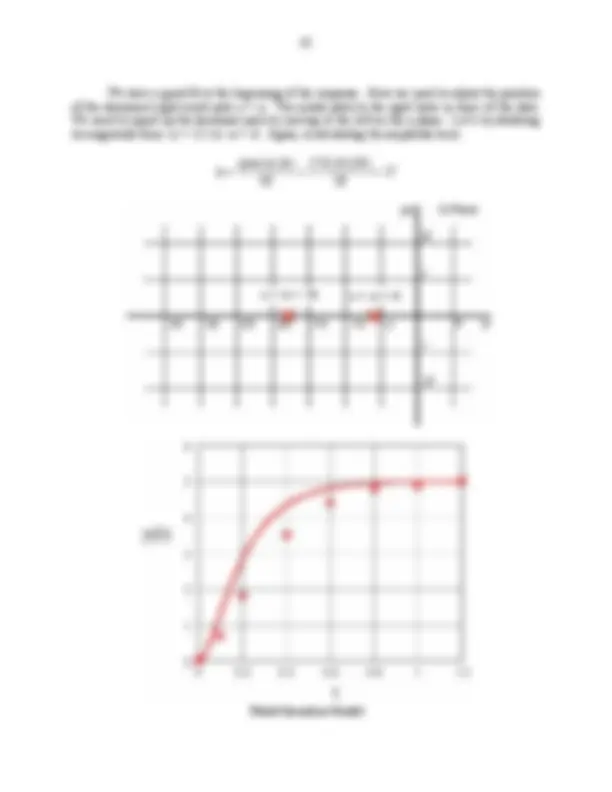
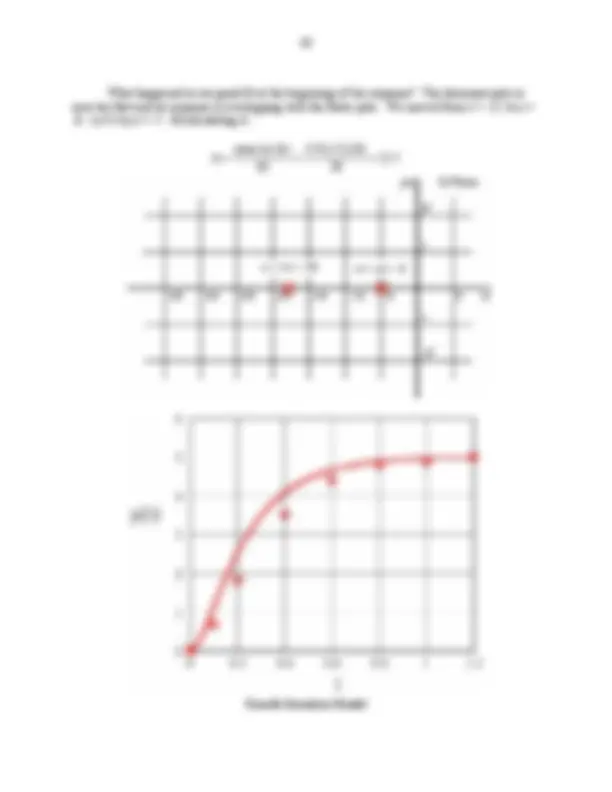
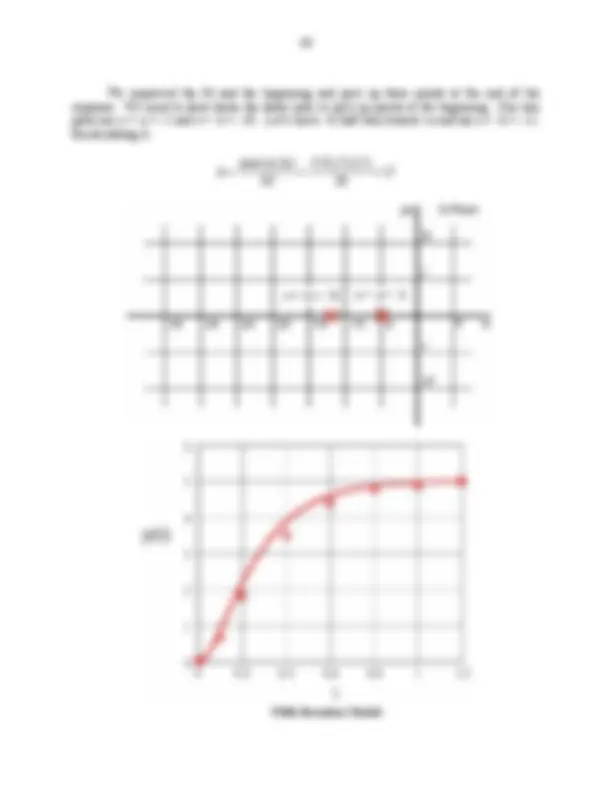
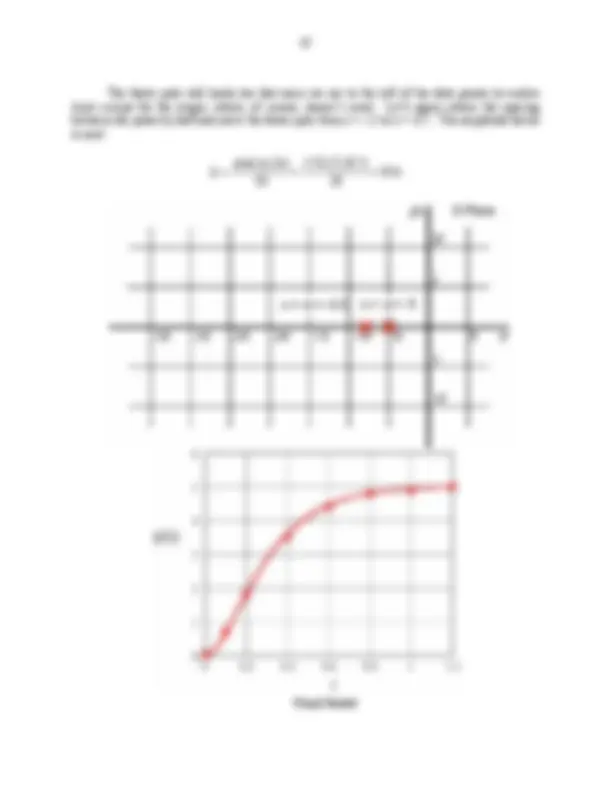
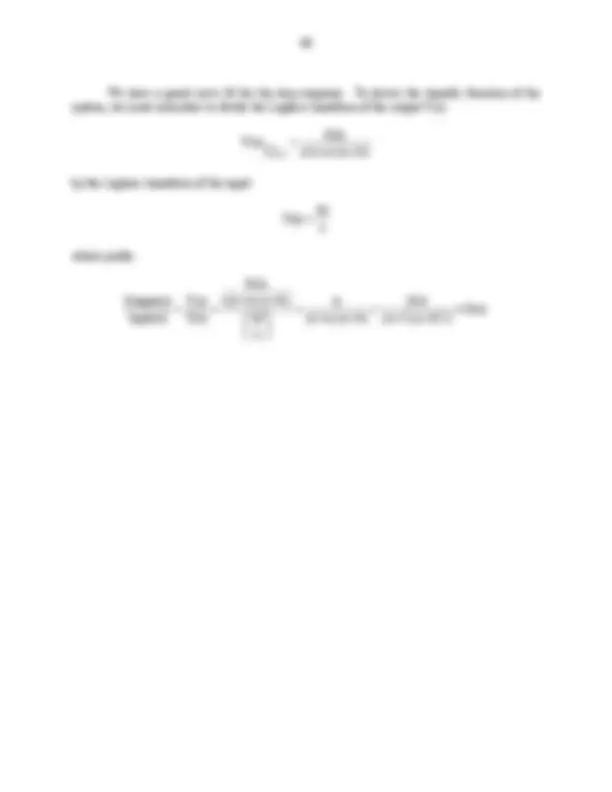

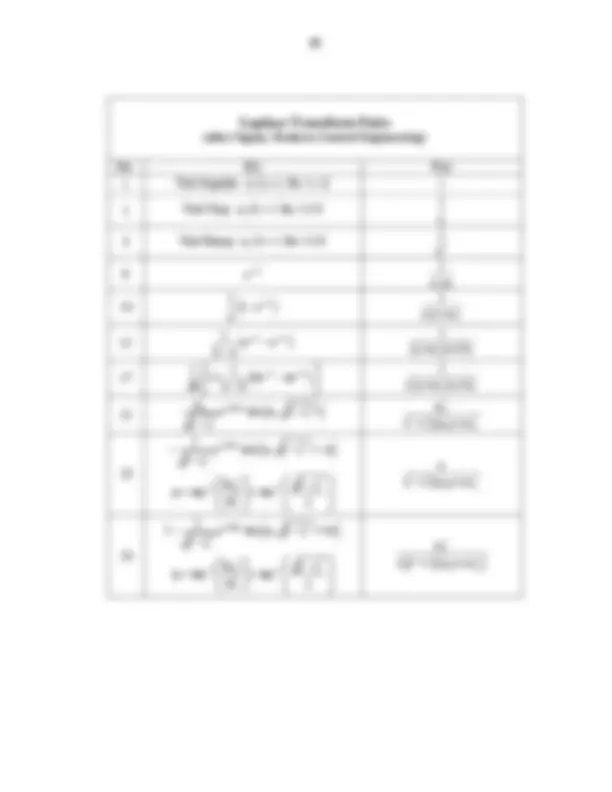


Study with the several resources on Docsity

Earn points by helping other students or get them with a premium plan


Prepare for your exams
Study with the several resources on Docsity

Earn points to download
Earn points by helping other students or get them with a premium plan
Community
Ask the community for help and clear up your study doubts
Discover the best universities in your country according to Docsity users
Free resources
Download our free guides on studying techniques, anxiety management strategies, and thesis advice from Docsity tutors
Step response curves of a second order spring-mass-damper mechanical system where the output variable is the force acting through the spring. The curves are labeled a, b, c, and d, and are accompanied by the mass, damping, and spring constant values, as well as the roots of the characteristic equation. The transfer function g(s) is also given in both polynomial and pole-zero form, and an example of evaluating g(s) for a complex number is provided.
Typology: Assignments
1 / 48

This page cannot be seen from the preview
Don't miss anything!









































© Dr. Seeler Department of Mechanical Engineering Spring 2005 Lafayette College ME 352: Dynamics of Physical Systems and Electric Circuits
Problem Set No. 8 Due Monday, April 25, 2005
CHARACTERISTIC EQUATIONS, PARTIAL FRACTION EXPANSION, AND COMPLEX EXPONENTIALS
Characteristic Equations of Transfer Functions
Factored or Pole-Zero Form of a Transfer Function
Complex Numbers and Complex Exponentials
Multiplication of Complex Numbers as Complex Exponentials
Partial Fraction Expansion Example One Example Two
System Identification: Characterizing Second Order Systems from their Step Responses
Problem Set No. 8
Second Order Step Responses
Second order step responses have a wider range of shapes that cannot be reduced to a single normalized curve. The two fundamental second order step responses are oscillatory, or underdamped, and non-oscillatory, or overdamped.
Underdamped and Overdamped Second Order Unit Step Responses
An overdamped (non-oscillatory) second order unit step response is described by the time domain equation:
y(t) K^1 1 be at^ aebt ab a b
where a, b, and K are real numbers.
An underdamped (oscillatory) second order unit step response time domain equation is more complicated:
n t^2 2 n
y(t) K 1 e sin 1 t 1
= ⎡⎢^ − −ζω ω − ζ + φ⎤⎥ ⎢⎣ − ζ ⎥⎦
where the phase angle φ is given by:
2 φ = tan −^1 ⎛^ ωd^ ⎞=tan−^1 ⎛^ ⎜^1 − ζ ⎞⎟ ⎜⎜ ⎟⎟ (^) ⎜ ⎟ ⎝ σ^ ⎠ (^) ⎝ ζ ⎠
2 a s 2 + a s 1 + a 0 =
The characteristic equation of a second order system can be solved using the quadratic equation. The easiest form to remember is:
2 1 2
b b 4ac s ,s 2a
Using the coefficients from the second order transfer function above:
2 1 1 2 1 2 2
a a 4a a s ,s 2a
The natural (unforced or homogenous) response of the system is oscillatory if the roots s 1
and s 2 are complex conjugates. This occurs when b^2 − 4ac < 0 or when b^2 < 4ac.
A useful form standard for the characteristic equation of an oscillatory second order system is:
2 1 0 2 n n 2 2
a a s s s 2 s a a
since the damping ratio ζ and the damped natural frequency ωd, and, hence, the natural frequency ωn can be derived from the unforced response of an oscillatory system. The relationship between ωd and ωn can be derived from this standard form using the quadratic equation with a = 1, b = 2 ζωn and c = ω^2 n:
(^2 ) n n 1 2
s ,s 2
=− ζω ±^ ζω^ −^ ω^ n
(^2 ) n n 1 2 n
s ,s 2
ζω − ω = −ζω ±
(^2 ) n n 1 2 n
s ,s 2
ζω − ω = −ζω ±
(^2 ) s ,s 1 2 = −ζω ±n ζωn − ωn
2 2 2 s ,s 1 2 = −ζω ±n ζ ω − ωn n
2 s ,s 1 2 = −ζω ± ωn n ζ − 1
Since the natural (unforced or homogenous) response of the system is oscillatory, ζ < 1.
Consequently, the quantity 1 – ζ^2 < 1. The final step is to factor the imaginary number − 1 out of the radical to put the result into the familiar form of a complex number.
2 s ,s 1 2 = −ζω ± ωn j (^) n 1 − ζ
The Laplace (frequency) domain complex variable s has the form s = σ + jω. Hence:
σ = −ζω n
2 j ω = j ωn 1 − ζ
The ω in s = σ + jω is the actual (or observed) frequency of the natural response of the system. Consequently, the ω in s = σ + j ω is the damped natural frequency ω d. Therefore:
2 ωd = ωn 1 − ζ
“Response curves” are a family of curves created to show the effect of varying the parameters of a system’s transfer function on the response of a system to a particular input. Below are step response curves of the second order spring-mass-damper mechanical system where the output variable is the force acting through the spring:
roots. Plotting the roots, , of the characteristic equations which correspond to
underdamped and overdamped step responses provides a graphical representation of the correspondence between the characteristic equation of a system and its time domain transient response.
s = σ + ωj
Step Responses
Roots of the Characteristic Equations Plotted on the s-Plane
Factored or Pole-Zero Form of a Transfer Function
The most useful form of a transfer function, and the form which is the basis for our design tools, is to express the denominator of a transfer function (the characteristic functions) as a the product of factors rather than as a polynomial in s. The factored form allows us to see the roots of the characteristic equation by inspection, since the roots of the characteristic equation are the values of s which yield zero. We will see in ME 478 that the roots of the numerator are useful the design of control systems.
The roots of the denominator and the numerator of a transfer functions represent very different aspects of the dynamic system and have very different effects on the transfer function. Consider a second order transfer function expressed in factored form where s = –p represents a root of the denominator and s= –z represents a root of the numerator:
2 2 1 0 1 2 2 2 1 0 1 2
Output b s^ b s^ b s^ z^ s^ z G(s) Input a s a s a s p s p
If: s = –z 1 or –z 2
then the magnitude of the transfer function evaluated setting s = –z 1 or –z 2 :
|G(–z 1 )| = |G(–z 2 )| = 0
However, if:
s = –p 1 or –p 2
then the magnitude of the transfer function evaluated setting s = –p 1 or –p 2 :
|G(–p 1 )| = |G(–p 2 )| = ∞
The values s = –z 1 and –z 2 are called “zeros” of the transfer function G(s). The values s = –p 1 or –p 2 are called “poles” of G(s). The term “pole” comes from a three dimensional plot with the components of complex variable s, forming the two axes of a plane and the magnitude of the transfer function |G(s)| evaluated for s within those limits of σ and jω as the axis normal to that plane.
Complex Numbers and Complex Exponentials
, recall that The result of evaluating a complex function with a complex argument, is a complex number. Example: Consider the transfer function G(s) expressed as the ratio of two polynomials and in pole-zero (factored) form:
2
Output s 3 s 3 G(s) Input 4s 2s 3 4 s 0.25 j0.829 s 0.25 j0.
Evaluate G(s) for s = -1 +j2:
2
1 j2 3 1 j2 3 G( 1 j2) 4 1 j2 2 1 j2 3 4 1 j2^ 0.25^ j0.829^1 j2^ 0.25^ j0.
2
2 j2 2 j G( 1 j2) 4 1 j2 2 j4 3 4 0.75^ j1.171^ 0.75^ j2.
2 j2 1 j G( 1 j2) 4 4 3 j4 2 j4 3 0.75 j1.171 0.75 j2.
2 j2^ 0.5 1^ j G( 1 j2) 11 j12 0.75 j1.171 0.75 j2.
G( 1 j2) 11 j12 2.75 3j
Because a complex number is a two dimensional vector, it can be expressed in “polar”
form in terms of its magnitude and its angle; Z = Z ∠ Z. The angle of a complex number is
measured counterclockwise from the positive real axis. The angle also called the “argument” or the “phase” of a complex number. Unfortunately, the angle of a complex number is not unique. The same angular position can be located either counterclockwise from the positive real axis (a positive angle) or clockwise (a negative angle). Also, a complete revolution in either the positive or negative direction about the origin of the complex plane does not change the angular position but it does change the angle. The “primary” angle φ of a complex number is smallest positive or negative angle which locates its angular position on a complex plane. The primary angle may or may be the actual angle of a complex number. Example: The primary angle of a complex number with an angle of –270o^ is 90o.
Both degrees and radians are used to measure the angle of a complex number. Unfortunately, mixed units are common, sometimes in the same plot!! There is no hard and fast rule. The rule of thumbs are: (1) If the calculation you are performing is a graphical construction, or is based on a graphical construction from the bad-old-days before calculators and personal computers, then use degrees, since protractors were used to draw graphical constructions. Protractors are marked in degrees, not radians. (2) If you are performing a calculation using calculus, or if you will use your result in a calculation derived with calculus, then use radians, since radians are the “natural” units of angles. (3) Hedge your bet. Given the uncertainty, always report your units, so your reader knows what your units are. Also, always be careful and verify the units of data which you are using. Errors with angular units are large errors.
Recall the relationships for sine and cosine:
opposite sin( ) hypotenuse
φ = and
adjacent cos( ) hypotenuse
φ =
Trigonometric relationships are dimensionless ratios. When the ratio is of the lengths of the sides of a triangle, it is dimensionless because the same unit of length must be used to
measure both sides and the units cancel. When the ratio of vector magnitudes, it is dimensionless because magnitudes are dimensionless.
Let us consider the vector decomposition of a complex number into its real and imaginary components using trig. The most useful case is the special case of a complex number with a magnitude of 1. For convenience, we will choose an angle 0 < φ < 90o.
where a vector of unit length in a complex plane is expressed with the same trigonometric relationship used for a unit vector in a real plane, except the vertical component is multiplied by the imaginary unit vector j.
If the magnitude of the vector is not equal one, then the unit vector is scaled by the magnitude:
These are four complementary expressions for the complex number Z : Cartesian, polar, vector decomposition, and magnitude times complex unit vector.
Euler recognized that cos( ) φ + jsin( )φ = e jφ. This relationship is particularly useful
because the mathematics of exponentials are particularly easy. The proof of the expression uses power series for cos(φ), sin(φ) and ex, where:
e jφ^ = cos( )φ + jsin(φ)
It is best to remember the relationship graphically.
Hence, we have two complementary expressions for a complex number represented as a magnitude times a complex unit vector:
The complex exponential relationship Z e jφ is particularly useful because the
mathematics of exponentials are particularly easy. Recall the laws of exponentials:
e e^ a^ b =e a^ +b and a a b b
e e e
In systems dynamics and controls, we often encounter complex functions which are the ratios of polynomials in the complex variable s, where s = σ + ωj. In the general case:
N(s) F(s) D(s)
where N(s) and D(s) represent the numerator and denominator polynomials, respectively. When a complex function of this form is evaluated for a specific value of (^) s = σ + ωj , the general case
yields the ratio of two complex numbers:
N N D D
x jy F( j ) x jy
N D
σ + ω = =
This ratio must be reduced to a single complex number. One method is to multiply numerator and denominator by the complex conjugate of the denominator, which will yield a purely real number as the denominator. Alternatively, the numerator and denominator can both be expressed using complex exponential unit vectors and the ratio then simplified. The latter method is generally easier.
The magnitude is calculated using the Pythagorean theorem using the magnitudes of the real and imaginary components. Remember to drop j from the imaginary component!
2 2 Z (^) N = x (^) N +yN
The angle is calculated using trig:
(^1 1) N N N
opposite y tan tan adjacent x
φ = −^ ⎛^ ⎞= −^ ⎛^ ⎞ ⎜ ⎟ ⎜^ ⎟ ⎝ ⎠ (^) ⎝ ⎠
It is best to check how your calculator evaluates the inverse tangent. It may only report angles in the first and fourth quadrants of the complex plane.
Expressing the numerator and denominator as magnitude times complex exponential unit vector and simplifying using the laws of exponents yields:
N N D D
j N N^ N^ j( j D D D
e e e
φ φ −φ ) = = (^) φ =
Example: Z = (1 + j)(3 +j)
We will find it useful to perform this type of vector multiplication when the vectors are expressed as complex exponentials.
It is always a good idea to plot complex numbers as vectors before performing any calculation:
Im
Re
The magnitudes are calculated using the Pythagorean Theorem, stripping off the imaginary unit vector j. Both of these vectors were conveniently located in the first quadrant, so the angle calculations are straight forward.
jtan^1 1 j 12 1 e^2 1 1.41ej 0.
− ⎛⎜ ⎞⎟
jtan^1 3 j 32 1 e^2 3 3.16ej 0.
− ⎛⎜^ ⎞⎟
j0.
|1.41|
j0.
|3.36|
The procedure is as follows. First, the polynomial a s 4 4 + a s 3 3 + a s 2 2 + a s 1 + a 0 must be
factored. If there is an oscillatory second order factor, it is generally best to keep it as a second order polynomial. Consequently, a fourth order characteristic function yields one of three possible forms:
N(s) N(s) a s a s a s a s a s p s p s p s p
or
( )( )( ) 4 3 2 2 2 (^4 3 2 1 0 1 2) n
N(s) N(s) a s a s a s a s a (^) s p s p s 2 s
or
( )( )
(^4 3 2 2 2 ) 4 3 2 1 0 1 1n 1n 2 2n 2n
N(s) N(s) a s a s a s a s a s 2 s s 2 s
The next step is to express the Laplace transformed variable (or signal) as the sum of terms with the denominators the individual factors determined in step one. A polynomial is assumed for the numerator which is one order lower than the denominator. If the denominator is a first order polynomial, then assume a constant for the numerator.
N(s) A B C D s p s p s p s p s p s p s p s p
or
( 1 )( 2 )( (^2) n 2 n^ ) ( 1 ) ( 2 ) (^) ( (^2) n 2 n)
N(s) A B Cs D s p s p s 2 s s^ p^ s^ p s 2 s
or
( (^2 1) 1n 1n^2 )( (^2 2) 2n 2 2n^ ) ( (^2 1) 1n 1n^2 ) ( (^2 2) 2n 2 2n)
N(s) As B Cs D s 2 s s 2 s s 2 s s 2 s
The constants A, B, C, and D are then evaluated. The constants for first order factors are determined by multiplying both sides of the equation by the factor and then evaluating the equation for the value of s which is the pole of that factor:
N(s) A B C D s p s p s p s p s p s p s p s p
N(s)
1
1 (^2 3 4) s p
s p
s p s p s p =−
s +p
1
0 1
s p
s p
=−
1
0 1 (^2) s p
B s p s p =−
1
0 1 (^3) s p
C s p s p =−
1 (^4) s p
s p =−
1 1 2 1 3 1 4
N( p ) A p p p p p p
The process is repeated for to determine the constants B, C, D.
The procedure to determine the constants for a second order factor is similar except it is necessary to differentiate both sides of the equation with respect to s to create two equations in order to determine the two unknowns.
The special cases involve repeated roots. The general case of repeated roots is not a practical concern since repeated roots requires two physical subsystems to be identical or for a second order factor to be exactly critically damped. Phenomenon which require parameters to have “exact” values are extremely unlikely. However, there is an important special case. It is
common to have systems with poles at the origin because a factor
s
in a transfer function
represents integration. The Laplace transform of a unit step input is also
s
. The Laplace
transform of a unit ramp input is the integral of a unit step. Hence, the unit ramp input is
2
s s s
The technique of partial fraction expansion when there are repeated roots will be illustrated with two examples. In both examples, a step input is integrated and then drives a second order system. In Example One, the second order system is overdamped (non-oscillatory); in Example Two, the system is underdamped and oscillatory.
Example One: The system shown in the block diagram below consists of an integrator followed
by an overdamped second order system. The system is given a unit step input
U(s) s
=. Use
partial fraction expansion and the Laplace Transform tables to determine the time domain response.